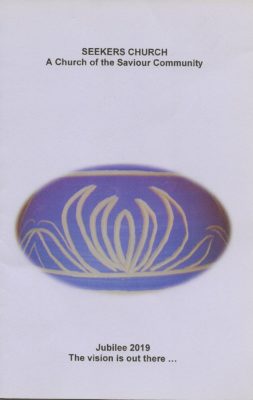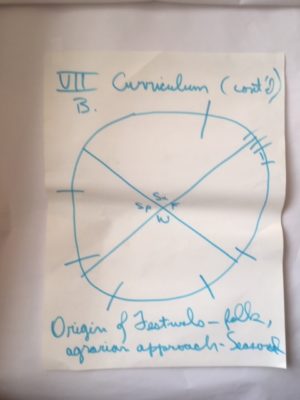A Sermon by Mike Tabor
 November 17, 2019
November 17, 2019
Twenty-third Sunday after Pentecost
Mike Tabor reflected on the agricultural origins of the yearly Jewish festival cycle. Using the diagram shown here, he pointed out that the Rosh Hashanah/Yom Kippur/Sukkot/Hoshanah Rabah group of observances in early fall as one of four “new year” observances that mark important moments in the agricultural cycle in the Middle East. The others include the late winter observance of Purim, which is similar in many ways to Carnival; the early spring festival of Pesach (Passover), which coincides with the barley harvest; and the early summer observance of Shavuot (Pentecost) at the time of the wheat harvest.
 Mike also noted that Hanukkah, like Christmas, falls at mid-winter, as the hours of daylight shrink and then begin to grow, and–like other Jewish holidays that are now officially tied to historical events–probably has its roots in a deeper agrarian past.
Mike also noted that Hanukkah, like Christmas, falls at mid-winter, as the hours of daylight shrink and then begin to grow, and–like other Jewish holidays that are now officially tied to historical events–probably has its roots in a deeper agrarian past.
Mike Tabor is a near neighbor to Seekers who lives with his wife, Esther Siegel, in Takoma Park. They are members of the Fabrangen havurah, a Jewish fellowship that is led by its members. Mike is a longtime social activist and farmer, using sustainable methods to grow fruits, vegetables, and Christmas trees on his Pennsylvania farm since 1972. His seasonal produce is sold at several DC farmers’ markets and at the Takoma Park Silver Spring Co-op grocery store. There is no written text of his talk.